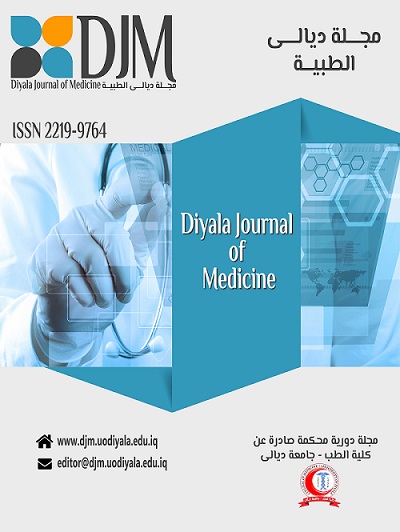Abstract
Background: In diabetes, there are big concerns regarding impaired wound healing and
other tissue disorders. The time and quality of wound healing are affected by many factors.
One of the medical sciences ' aims is short-term wound healing with decreased side effects
Herbal products are more valuable in both prophylaxis and curative in slowed diabetic
wound healing as compared to synthetic drugs A considerable number of researches have
shown that capers plant has distinct biological effects, including antioxidant, anticancer and
antibacterial activity. Phytochemical analysis reveals C. Spinosa has large amounts of
bioactive compounds, including polyphenolic compounds, which are essential for its health-
promoting effects.
Objective: Histological evaluation of the effect of topical application of flavonoid extract of
Capparis spinosa on the healing of incisional cutaneous wounds in alloxan-induced diabetic
rats.
Patients and Methods: A total of 30 healthy male Wistar rats weighing approximately 250-
300 g were used in this study. A surgical incisional wound with full skin thickness of 1.5 cm
length were done in cheek skin of each rat. All rats were randomly divided into following
groups: Group A: (10 healthy rats) received daily local application of the plant extract.
Group B: (10 alloxan-induced diabetic rats) received daily local application of extract of the
plant material. Group C: (10 alloxan –induced diabetic rats) where normal saline was applied
locally instead of plant extract. Assessment of wound contraction was done as well as
epithelial thickness inflammatory cell count and blood vessels count. Scarification of all
animals was done for the healing periods (3 and 7 days), and specimens were prepared for
histological analysis.
Results: The results revealed that the recorded mean values of wound contraction increased
with time in each group and that the highest mean values recorded in group A and B. Mean
values of inflammatory cell count decreased with time lowest values recorded in group A after 7
days. Regarding epithelial thickness values increased with time. Blood vessels count showed
highest mean value in group A at day 7.
Conclusion: Results from this study showed that flavonoid rich extract of Capparis spinosa
enhances wound healing process in diabetic rats.
other tissue disorders. The time and quality of wound healing are affected by many factors.
One of the medical sciences ' aims is short-term wound healing with decreased side effects
Herbal products are more valuable in both prophylaxis and curative in slowed diabetic
wound healing as compared to synthetic drugs A considerable number of researches have
shown that capers plant has distinct biological effects, including antioxidant, anticancer and
antibacterial activity. Phytochemical analysis reveals C. Spinosa has large amounts of
bioactive compounds, including polyphenolic compounds, which are essential for its health-
promoting effects.
Objective: Histological evaluation of the effect of topical application of flavonoid extract of
Capparis spinosa on the healing of incisional cutaneous wounds in alloxan-induced diabetic
rats.
Patients and Methods: A total of 30 healthy male Wistar rats weighing approximately 250-
300 g were used in this study. A surgical incisional wound with full skin thickness of 1.5 cm
length were done in cheek skin of each rat. All rats were randomly divided into following
groups: Group A: (10 healthy rats) received daily local application of the plant extract.
Group B: (10 alloxan-induced diabetic rats) received daily local application of extract of the
plant material. Group C: (10 alloxan –induced diabetic rats) where normal saline was applied
locally instead of plant extract. Assessment of wound contraction was done as well as
epithelial thickness inflammatory cell count and blood vessels count. Scarification of all
animals was done for the healing periods (3 and 7 days), and specimens were prepared for
histological analysis.
Results: The results revealed that the recorded mean values of wound contraction increased
with time in each group and that the highest mean values recorded in group A and B. Mean
values of inflammatory cell count decreased with time lowest values recorded in group A after 7
days. Regarding epithelial thickness values increased with time. Blood vessels count showed
highest mean value in group A at day 7.
Conclusion: Results from this study showed that flavonoid rich extract of Capparis spinosa
enhances wound healing process in diabetic rats.
Keywords
Capparis spinosa
Diabetic rats.
wound healing
